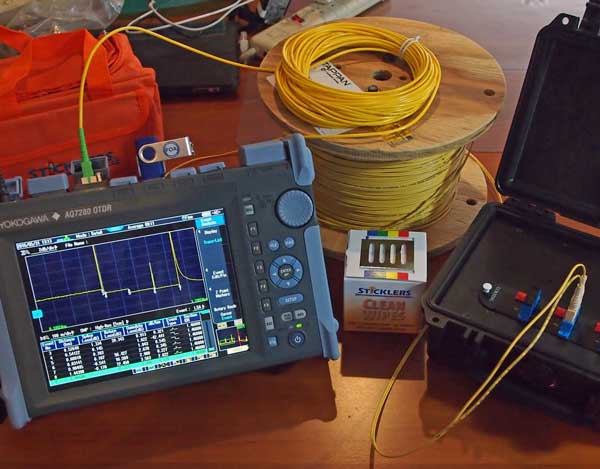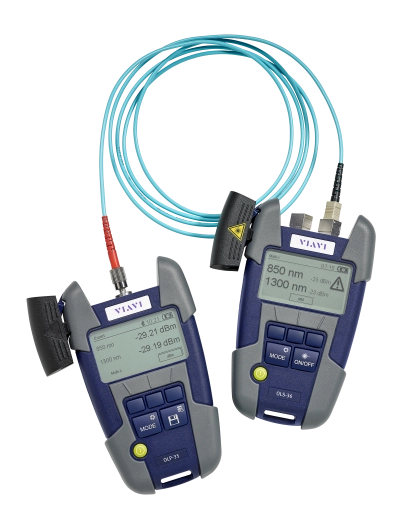Checking out the Impact of Robotic Vision on Modern Manufacturing Techniques and Quality Assurance
Robotic vision modern technology is changing the landscape of modern production and quality assurance. By incorporating innovative imaging systems and expert system, makers can accomplish unmatched degrees of accuracy and effectiveness. This shift not just maximizes manufacturing procedures but likewise addresses essential obstacles in preserving item criteria. As sectors increasingly count on these technologies, the effects for future production methods stay to be completely explored. What will this imply for the affordable dynamics of the marketplace?
Comprehending Robotic Vision Innovation
Robotic vision innovation functions as the foundation of automation in modern manufacturing. It encompasses making use of electronic cameras, sensors, and expert system to allow robotics to interpret and reply to visual information from their environment. This innovation permits robotics to recognize, situate, and review things, making them efficient in executing complex tasks such as assembly, assessment, and product handling with precision. The combination of artificial intelligence formulas further boosts the capability of robot vision systems, permitting them to adapt to varying problems and improve in time. By refining photos and data in real-time, robotic vision systems can help with faster decision-making and reduce mistakes in making processes (fibre testing equipment). This modern technology not only boosts operational performance but also assures that high quality standards are fulfilled constantly. As the production landscape remains to progress, understanding the intricacies of robot vision modern technology comes to be necessary for leveraging its potential completely
Benefits of Robotic Vision in Manufacturing
Robotic vision modern technology supplies substantial advantages in production by enhancing precision and accuracy in tasks such as quality assurance and assembly. This enhanced level of detail warranties that items satisfy rigid requirements, reducing waste and remodel. Furthermore, the combination of robot vision can bring about increased production performance, enabling suppliers to enhance their processes and attain higher outcome prices.
Boosted Precision and Accuracy
In contemporary production, improved precision and accuracy are essential for optimizing production procedures and making certain product quality. Robotic vision systems enable devices to do complicated tasks with exceptional consistency. These systems utilize advanced imaging modern technologies to detect minute details and variants in products, elements, and finished products. By analyzing visual information in real-time, robotic vision substantially decreases human error, resulting in less issues and higher top quality requirements. Furthermore, enhanced accuracy in measurements and positioning facilitates better alignment in assembly processes, which is crucial for detailed designs. Ultimately, the integration of robot vision not just bolsters the dependability of manufacturing outputs but likewise fosters confidence amongst consumers concerning product stability and efficiency. This accuracy is critical in sectors where top quality is vital.
Raised Manufacturing Effectiveness

Makers are significantly turning to vision systems to increase manufacturing efficiency across numerous procedures. These innovative systems allow real-time assessment and tracking, substantially reducing downtime caused by errors or defects. By integrating robot vision, companies can automate quality assurance, enabling faster identification of problems and reducing the need for human treatment. This causes structured workflows, as robotics can swiftly adapt to adjustments in production needs without giving up precision. Vision systems promote far better stock administration by properly tracking parts and products, making certain suitable resource usage. Eventually, the adoption of robot vision not only boosts efficiency however likewise adds to greater result prices, minimized operational costs, and improved total performance in the production sector.
Enhancing Quality Assurance Processes
Robotic vision modern technology substantially enhances top quality control processes in manufacturing by using accuracy evaluation strategies. These sophisticated systems facilitate real-time issue discovery, ensuring that items fulfill stringent quality standards. Therefore, makers can lessen waste and enhance total effectiveness.
Precision Inspection Techniques
Accuracy assessment strategies have actually transformed quality assurance procedures in manufacturing, making it possible for the detection of minute flaws that conventional approaches may ignore. These techniques leverage progressed imaging technologies, such as high-resolution cams and laser scanning, to achieve unparalleled accuracy. By utilizing robotic vision systems, producers can automate examination tasks, making certain constant performance and decreasing human mistake. The assimilation of artificial index intelligence algorithms furthermore boosts click over here these systems, enabling them to adapt and boost with time. In enhancement, precision assessment assists in the identification of refined variations in product measurements and surface area finishes, which can substantially impact general item quality. As an outcome, suppliers can execute corrective activities a lot more promptly, eventually causing decreased waste and improved client complete satisfaction.
Real-Time Problem Discovery
Using innovative imaging innovations, real-time defect detection transforms quality assurance processes in production. By integrating high-resolution video cameras and innovative formulas, suppliers can promptly determine abnormalities throughout production. This modern technology helps with instant corrective activities, minimizing waste and enhancing total efficiency. Real-time systems evaluate items as they relocate along the production line, making certain that problems are found and dealt with without postponing production schedules. On top of that, the execution of artificial intelligence improves the precision of these systems, enabling them to adapt to new issue patterns gradually. Subsequently, manufacturers take advantage of enhanced product quality and lowered operational costs. Ultimately, real-time defect detection not only enhances procedures however likewise cultivates a culture of continual renovation in contemporary production environments.
Real-Time Data Analysis and Decision Making
In the dynamic landscape of manufacturing, real-time data evaluation empowers systems to make swift, notified decisions. By leveraging sophisticated robot vision innovations, makers can collect and process substantial quantities of information instantaneously. These systems analyze visual inputs to check production processes, ensuring that any type of inconsistencies from top quality requirements are discovered and addressed quickly. Suppliers can enhance operations by reallocating sources and readjusting process based on real-time insights.
Moreover, the integration of information analytics permits anticipating upkeep, where prospective equipment failures are expected before they interrupt manufacturing. This positive strategy decreases downtime and boosts general efficiency. optical fibre diameter analyser. The capability to make data-driven choices in genuine time significantly lowers waste and improves item high quality, permitting producers to respond to market needs quickly. Because of this, real-time data evaluation not only simplifies manufacturing yet likewise fosters a culture of continuous renovation in modern-day production environments
Difficulties in Applying Robotic Vision Solutions
Implementing robotic vision systems in producing provides a range of obstacles that can impede their efficiency. One substantial obstacle is the complexity of integrating these systems with existing equipment and process. Makers usually deal with compatibility problems with heritage devices, causing enhanced costs and downtime. In addition, the variability in item forms, sizes, and products can make complex the calibration of vision systems, demanding extensive training and fine-tuning.
An additional difficulty depends on processing huge quantities of visual information in real time. High-performance computing sources are necessary, which may require further financial investment in facilities. There is a scarcity of experienced personnel capable of handling and maintaining these advanced systems, leading to prospective functional ineffectiveness. Ultimately, making certain the dependability and precision of robot vision systems under varying ecological conditions postures a continuous obstacle. Addressing these problems is essential for taking full advantage of the potential advantages of robotic vision in production.
Future Patterns in Robotic Vision for Production
As improvements in expert system and artificial intelligence continue to advance, the future of robot vision in manufacturing shows up increasingly appealing. Arising trends indicate a change towards much more sophisticated imaging technologies, such as 3D vision systems and hyperspectral imaging, which will boost accuracy in top quality control procedures. Combination with the Web of Things (IoT) will allow real-time information evaluation, enabling robot systems to adapt swiftly to modifications in the manufacturing setting. The advancement of collective robots (cobots) furnished with advanced vision capabilities is expected to facilitate seamless human-robot communications, enhancing effectiveness hop over to here and security on the factory flooring. Additionally, the consolidation of edge computer will certainly empower robot vision systems to refine information locally, decreasing latency and making it possible for faster decision-making. These developments will certainly not just streamline making procedures but likewise substantially enhance item quality, positioning robotic vision as a cornerstone of future commercial operations.
Often Asked Inquiries
Just How Much Does Robotic Vision Technology Typically Cost?
Robotic vision innovation generally sets you back in between $10,000 and $100,000, depending upon the intricacy and specs. Aspects influencing price include sensor quality, software capabilities, and assimilation needs, making it vital to evaluate particular job demands.
What Industries Are Many Influenced by Robotic Vision Innovations?
Robotic vision advancements substantially influence markets such as manufacturing, vehicle, electronics, and food handling - fibre testing equipment. These industries profit from boosted automation, boosted high quality control, and raised performance, causing structured procedures and lowered labor prices
Can Robotic Vision Systems Be Integrated With Existing Equipment?
Robotic vision systems can undoubtedly be integrated with existing machinery. This combination enhances operational efficiency, allowing suppliers to leverage progressed innovations without the requirement for total overhauls, therefore maximizing manufacturing procedures and maintaining high quality criteria.

What Skills Are Needed to Run Robotic Vision Systems?
Operating robot vision systems demands efficiency in programming, an understanding of machine knowing, expertise of photo processing strategies, and the ability to fix hardware and software application issues, making sure seamless integration and ideal performance within producing settings.
Are There Any Type Of Security Concerns With Robotic Vision in Production?
